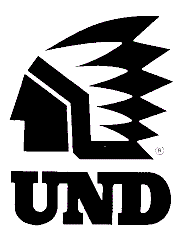By Chuck Haga
Against the “thundering herd” of uniformed and helmeted Bison fielded by what then was the North Dakota Agricultural College, the Aggies, UND sent squads of … Flickertails. Variants of gophers. Rodents.
But “A Student,” as the writer signed his letter, noted that UND was becoming something of a power in football, scheduling such teams as Army and looking to make a national name for itself.
So “it wouldn’t be a bad idea,” he wrote, “to turn the tables and stage a buffalo hunt in the good old Indian manner. By the way, how’s that for a name, the ‘Sioux’?”
“Besides being easily rhymed for yells and songs, Sioux expresses a real sentiment,” E.A.H. wrote. “Sioux, says the dictionary, is an Indian of one of the most important tribes of North America. … They are warlike, of fine physique and bearing and a proud race.”
“Henceforth the Flickertails of North Dakota University will be no more,” the story began. “The defenders of the gridiron, of the basketball court, and of the cinders no longer need labor under the strain of bearing a cumbersome caption, for they have been newly baptized ‘Sioux.’ Consequently, it will be a tribe of warriors swooping down upon their invading foes tonight … instead of a scurrying swarm of gophers.”
So the stereotypes were present from the beginning. If you think "warlike"--someone who conquers and kills for a living--is a compliment, you'll love "Fighting Sioux." Huns, Mongols, Goths, Vikings, Conquistadors, Nazis, and Sioux...the greatest butchers and slayers in history.
For more on the subject, see North Dakota Orders UND to Keep "Sioux" and "Fighting Sioux" = "Obnoxious Baboons."


I don't think they said "gorillalike" or "bulky".
ReplyDeleteBut they did emphasize physical strength rather than mental capabilities. I'm just providing synonyms for "strong"--to help people understand what it means.
ReplyDelete